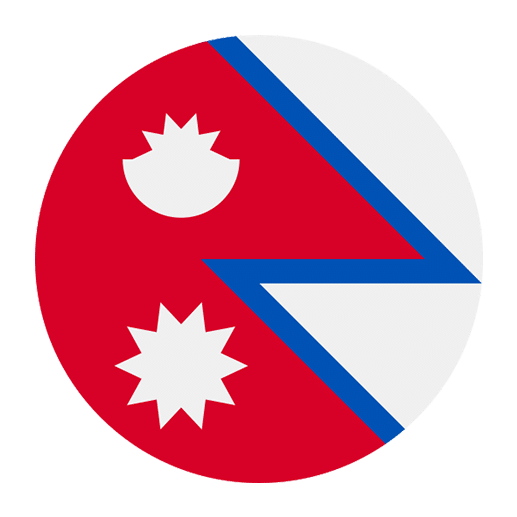Nepali, the official language of Nepal, is rich in its use of pronouns which form a crucial part of the language structure. Understanding the different types of pronouns in Nepali can significantly enhance your fluency and comprehension. This article will delve into personal, demonstrative, and relative pronouns in Nepali, providing examples and explanations to help you master their usage.
Personal Pronouns
Personal pronouns in Nepali are used to refer to the speaker, the person being spoken to, or the person or thing being spoken about. Similar to English, Nepali personal pronouns change according to the number, gender, and formality.
First Person Pronouns
Singular:
– म (ma) – I
– मेरो (mero) – My
Plural:
– हामी (hāmī) – We
– हाम्रो (hāmro) – Our
Examples:
– म स्कूल जान्छु। (Ma skool jaanchhu.) – I go to school.
– हाम्रो घर ठूलो छ। (Hāmro ghar thulo chha.) – Our house is big.
Second Person Pronouns
Second person pronouns in Nepali vary based on the level of formality: informal, formal, and very formal.
Informal (used with friends, younger people):
– तिमी (timī) – You (singular)
– तिमीहरूको (timīharuko) – Your (plural)
Formal (used with elders, colleagues):
– तपाईं (tapāīṁ) – You (singular)
– तपाईंहरूको (tapāīṁharuko) – Your (plural)
Very Formal (used with strangers, respect):
– तपाईँ (tapāīṁ) – You (singular)
– तपाईँहरूको (tapāīṁharuko) – Your (plural)
Examples:
– तिमी कता गइरहेको छौ? (Timī kata gairahēko chau?) – Where are you going?
– तपाईंको नाम के हो? (Tapāīṁko nām ke ho?) – What is your name?
– तपाईँको परिवार कस्तो छ? (Tapāīṁko pariwār kasto chha?) – How is your family?
Third Person Pronouns
Third person pronouns also have different forms based on distance (proximal or distal) and number.
Proximal (near):
– उहाँ (uhāṁ) – He/She (honorific)
– यो (yo) – This (object)
– यी (yī) – These (objects)
Distal (far):
– ऊ (ū) – He/She (informal)
– त्यो (tyo) – That (object)
– तिनीहरू (tinīharū) – They (people)
Examples:
– उहाँ मेरा गुरु हुनुहुन्छ। (Uhāṁ merā guru hunuhunchha.) – He/She is my teacher.
– यो किताब हो। (Yo kitāb ho.) – This is a book.
– तिनीहरू बजार गएका छन्। (Tinīharū bajār gāekā chhan.) – They have gone to the market.
Demonstrative Pronouns
Demonstrative pronouns in Nepali are used to point out specific items or people. They are context-dependent and change based on proximity (near or far).
Proximal (near):
– यो (yo) – This
– यी (yī) – These
Distal (far):
– त्यो (tyo) – That
– तिनी (tinī) – Those
Examples:
– यो मेरो घर हो। (Yo mero ghar ho.) – This is my house.
– यी मेरा साथीहरू हुन्। (Yī merā sāthīharū hun.) – These are my friends.
– त्यो किताब राम्रो छ। (Tyo kitāb rāmrō chha.) – That book is good.
– तिनी फूलहरू सुन्दर छन्। (Tinī phūlharū sundar chhan.) – Those flowers are beautiful.
Relative Pronouns
Relative pronouns in Nepali are used to connect clauses or sentences, providing additional information about the noun. Common relative pronouns include जो (jo) for “who,” जुन (jun) for “which,” and जसले (jasle) for “whose.”
Examples:
– त्यो मान्छे जो किताब लेख्छन् (Tyo mānchhe jo kitāb lekchhan) – The person who writes the book.
– त्यो कुरा जुन मैले भनेको थिएँ (Tyo kurā jun maile bhanēko thiyēṁ) – The thing which I said.
– त्यो मानिस जसको घर ठूलो छ (Tyo mānish jasko ghar thulo chha) – The person whose house is big.
Combining Relative Pronouns with Verbs
Relative pronouns often combine with verbs to provide more detailed information.
Examples:
– उ जो पढिरहेको छ (U jo padirahēko chha) – He who is studying.
– त्यो केटा जसले गित गाएको थियो (Tyo ketā jasle git gāeko thiyo) – The boy who had sung the song.
Usage Tips and Practice
Understanding the nuances of pronouns in Nepali is crucial, but practice is essential for mastery. Here are some tips and exercises to help you:
1. Practice with Native Speakers:
Engage in conversations with native Nepali speakers to get accustomed to the natural use of pronouns.
2. Listen to Nepali Media:
Watch Nepali movies, listen to Nepali music, and follow Nepali news to see how pronouns are used in different contexts.
3. Write Sentences:
Practice writing sentences using different pronouns. For example, describe your day using first-person pronouns, talk about a friend using second-person pronouns, and narrate a story using third-person pronouns.
4. Use Flashcards:
Create flashcards with different pronouns and their English equivalents. Test yourself regularly to reinforce your memory.
5. Read Nepali Literature:
Reading Nepali books, newspapers, and articles can help you see how pronouns are used in written language.
6. Create Scenarios:
Imagine different scenarios and practice forming sentences with appropriate pronouns. For instance, describe a family gathering, a trip to the market, or a classroom setting.
Conclusion
Mastering pronouns in Nepali requires understanding their different forms and contexts. Personal pronouns vary based on formality and number, demonstrative pronouns depend on proximity, and relative pronouns connect clauses to provide additional information. With consistent practice and exposure to the language, you’ll find yourself using these pronouns naturally and effectively. Happy learning!

